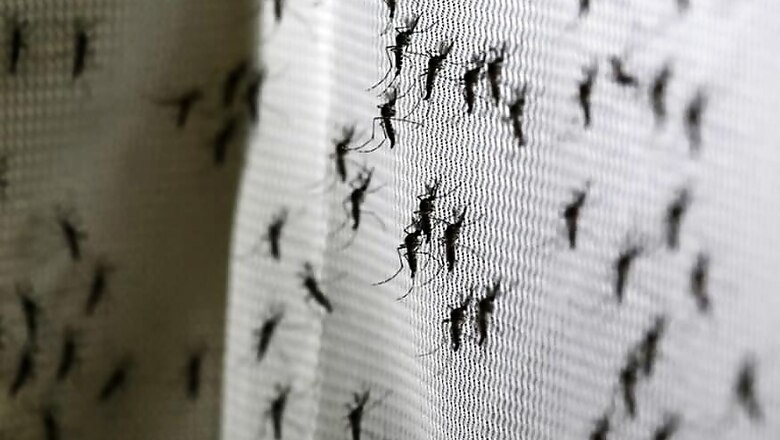
views
Conventionally we have always heard that mosquitoes have a limited range and fly low to the ground. Furthermore, it is believed that the insects which cause a range of mosquito-borne disease like malaria, chikungunya and dengue, flies typically less than 5 kilometres during their brief lifetime, researchers have now turned the notion on its head.
Sahel, a semi-desert region just south of the Sahara Desert, sees malaria-bearing mosquitoes borne on winds that allow them to travel hundreds of kilometers—and as high as 290 meters above the ground—in a single night.
According to the findings of the study, published in Nature, that could be the reason why mosquito populations can surge so suddenly—and mysteriously—in the Sahel.
This also has mammoth implications for efforts to eliminate malaria from entire countries or regions.
Notably, long-distance travel by mosquitoes could increase the risk of malaria reintroduction after it has been eliminated in a particular place. Furthermore, mosquito flights could also aid the spread of insecticide-resistant mosquitoes and drug-resistant parasites.
Speaking about the same, Gerry Killeen, a mosquito ecologist at the Ifakara Health Institute in Tanzania and the Liverpool School of Tropical Medicine in the United Kingdom said that the study is imaginative and unprecedented, completely changing our understanding of malaria vector ecology and gene flow.
Notably, researchers from the National Institute of Allergy and Infectious Diseases (NIAID) in Bethesda, Maryland, the University of Bamako, and elsewhere had been studying mosquito ecology in four villages in central Mali for 10 years.
In 2014, they published a population dynamics study in Nature, containing strong evidence that at least one malaria-carrying mosquito species is a long-distance traveler, abandoning the Sahel during the dry season.
The discovery led NIAID mosquito ecologist Tovi Lehmann and his team on a hunt, where they used helium balloons to hoist vertical sticky nets between 40 meters and 290 meters above the ground in the four villages on 617 different nights between 2013 and 2015. They captured 461,000 insects including 2748 mosquitoes, 235 of which were Anopheles, the genus that carries malaria parasites.
Interestingly, the mosquito harvest grew larger with the height of the sticky nets, suggesting they may migrate at even higher altitudes. Furthermore, more than 80 percent of the captured mosquitoes were female and 90% had taken a human blood meal before traveling, meaning they could have been exposed to malaria parasites.
Study authors used meteorological modeling tools to calculate possible travel trajectories, taking into account wind direction and speed. Considering that the insects rose on their own, before being borne along on the wind, a mosquito might travel as far as 295 kilometers in a single, 9-hour nocturnal journey, they reported.
The authors concluded that the scale of migration is massive and they estimate that each year, more than 50 million mosquitoes capable of carrying malaria traversed an imaginary 100-kilometer line perpendicular to the prevailing wind blowing in the wind.
However, it is to be noted that the scientists did not find malaria parasites in a single mosquito. They say, this is because they captured only 235 Anopheles mosquitoes, and studies suggest mosquito infection rates in the region are between 0.1% and 5%.



















Comments
0 comment